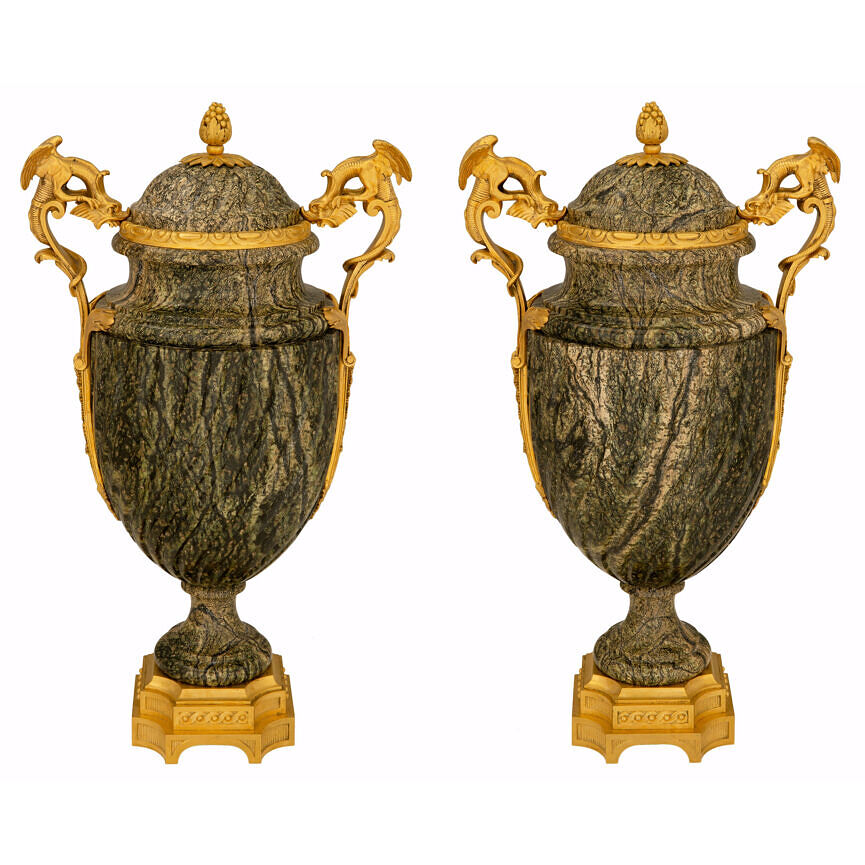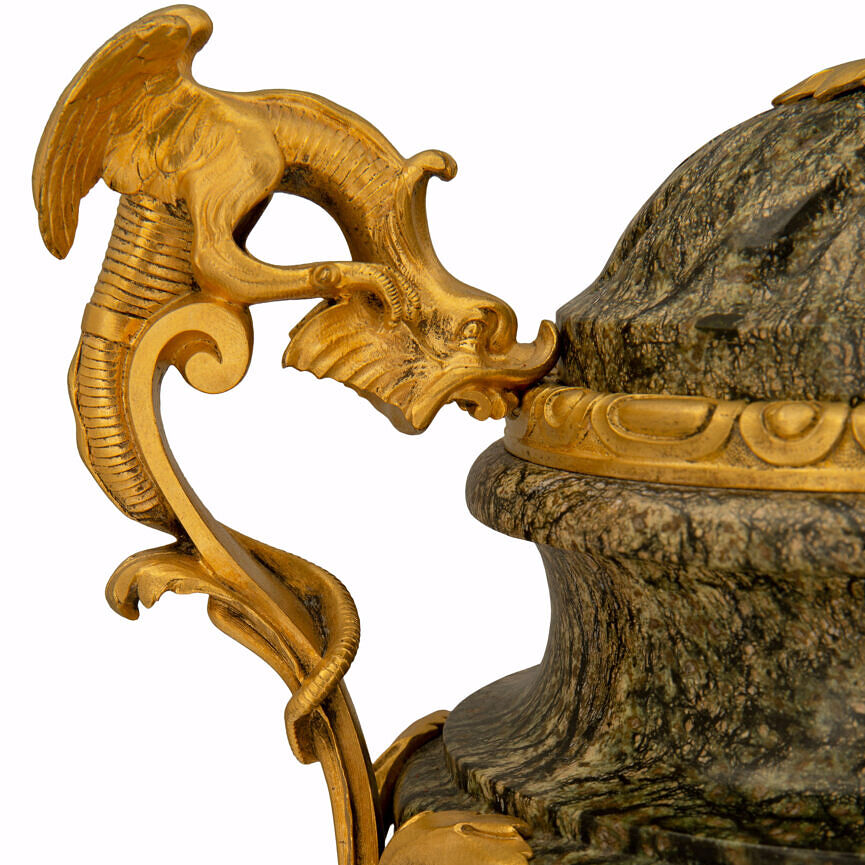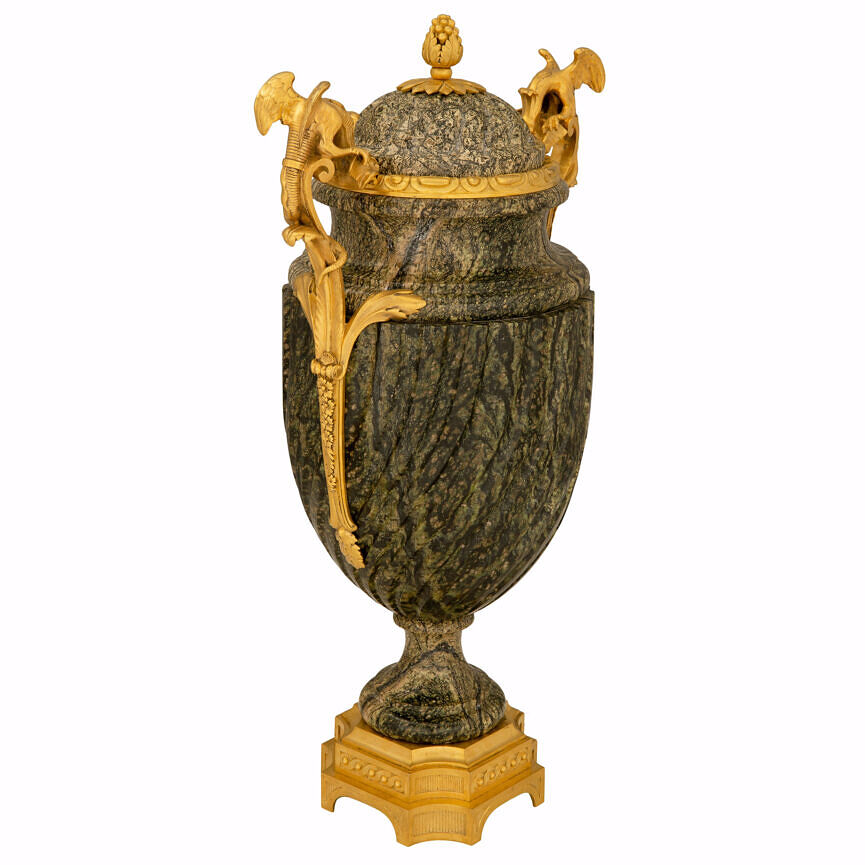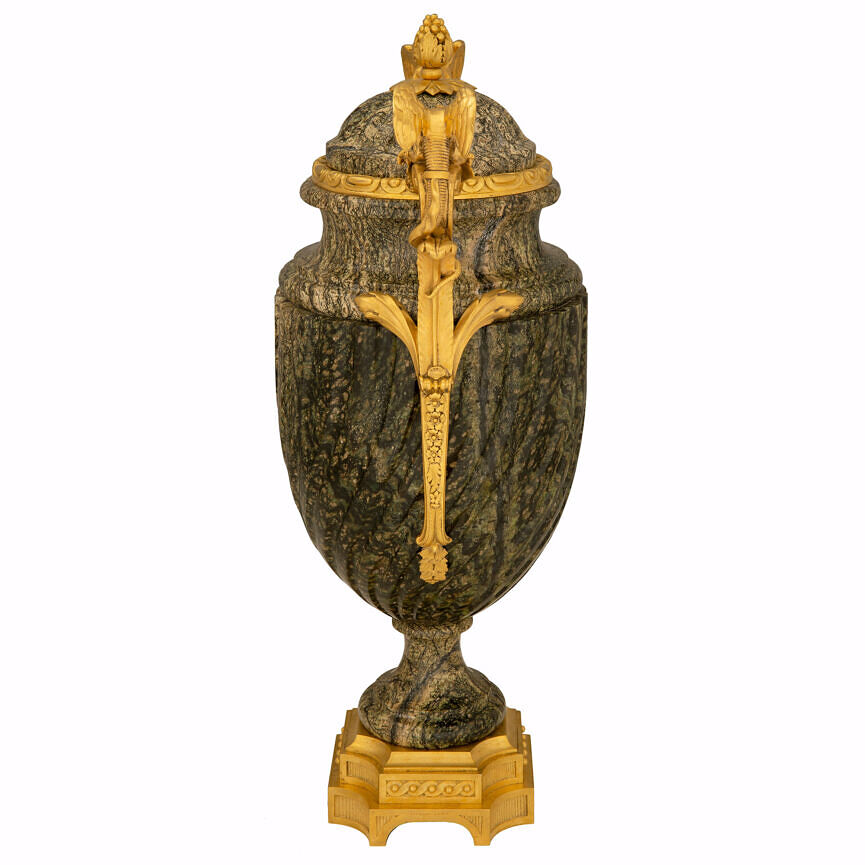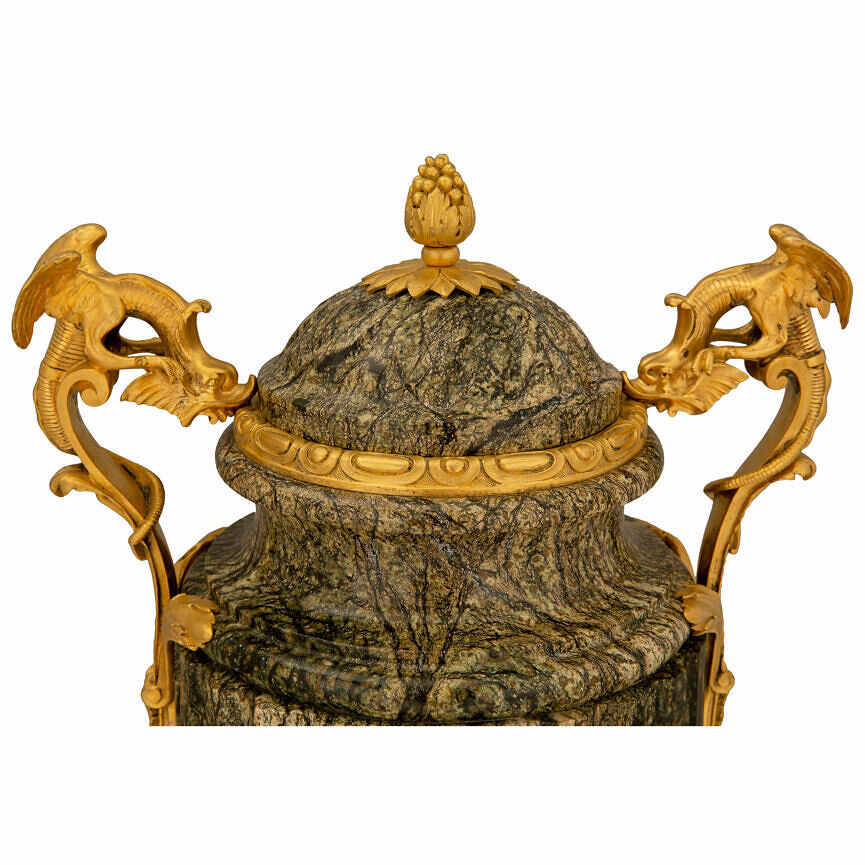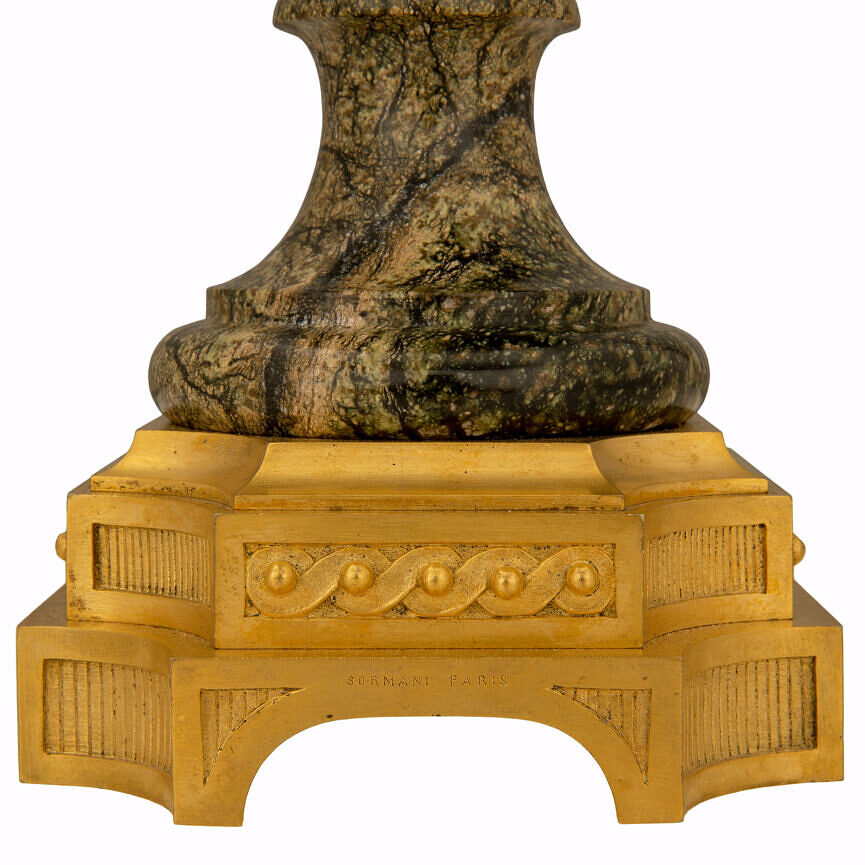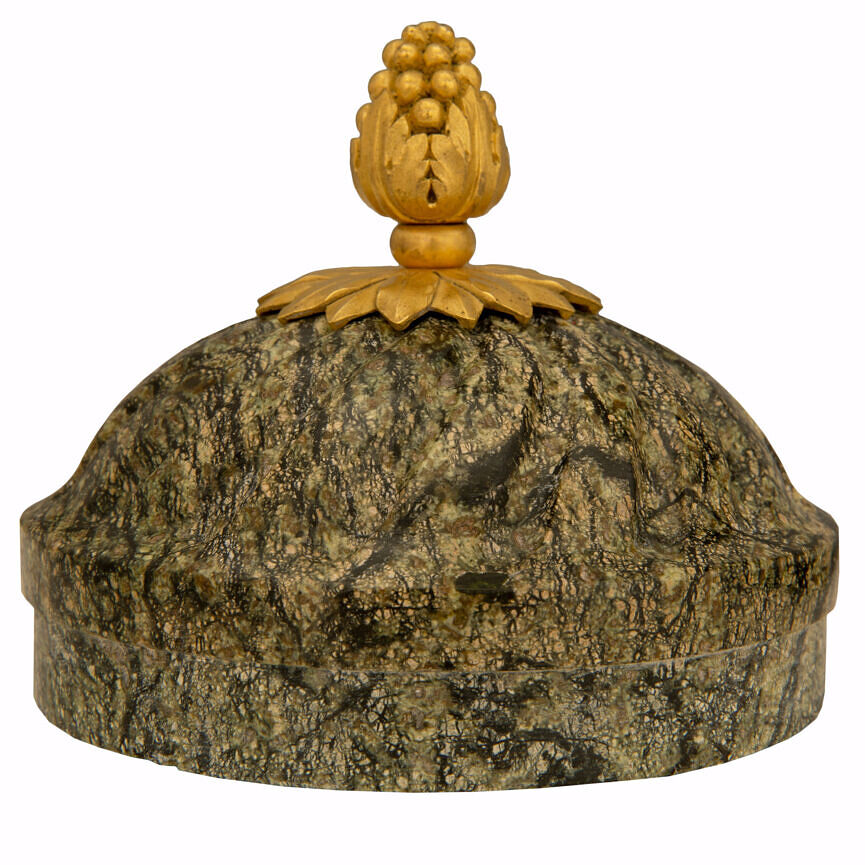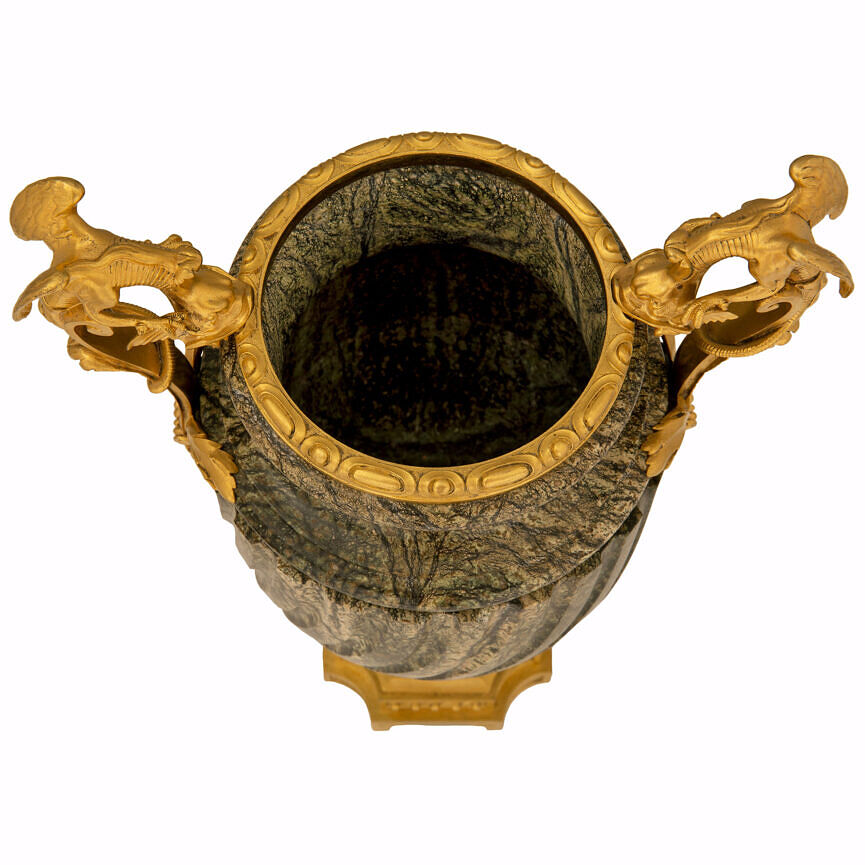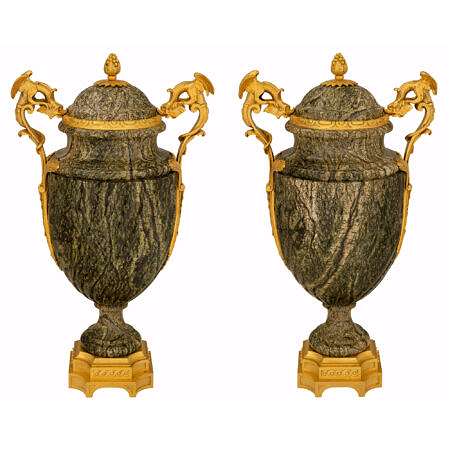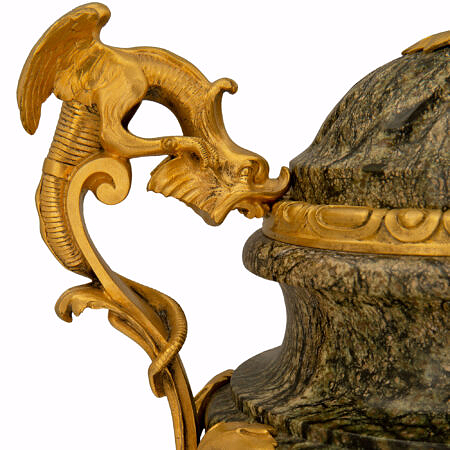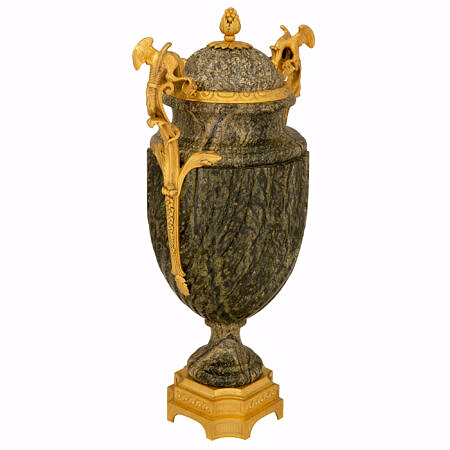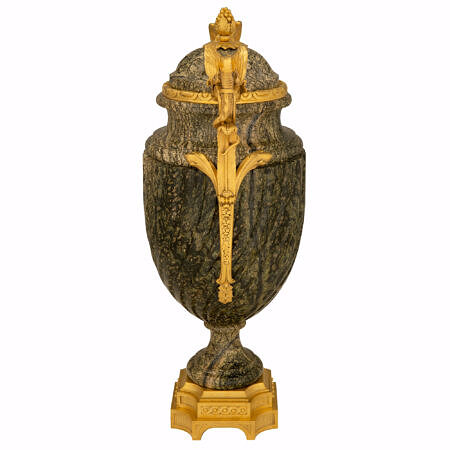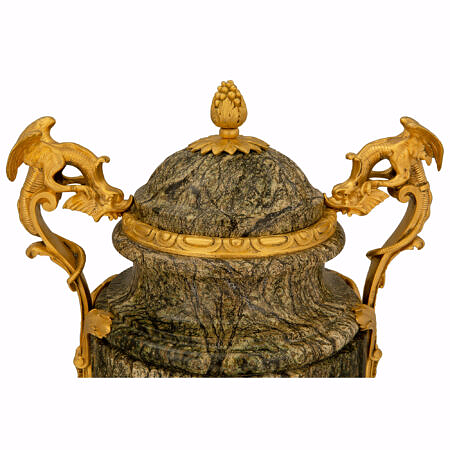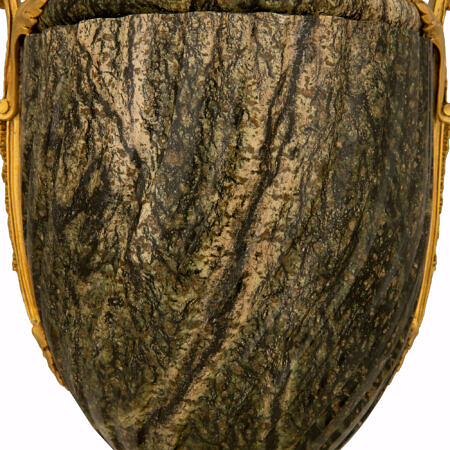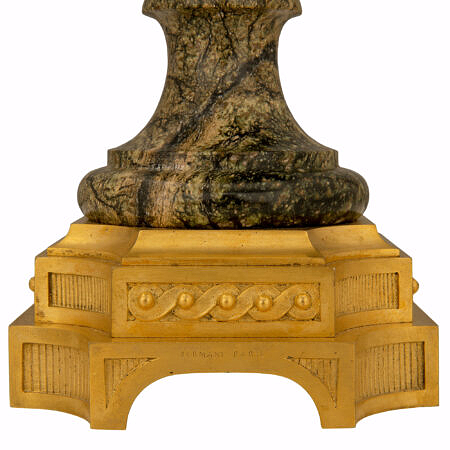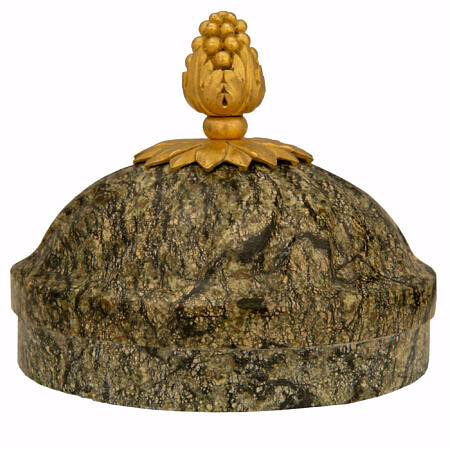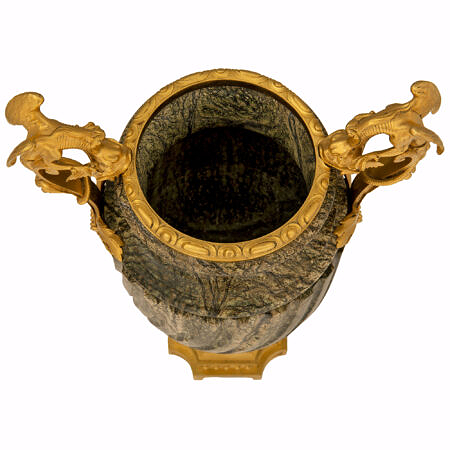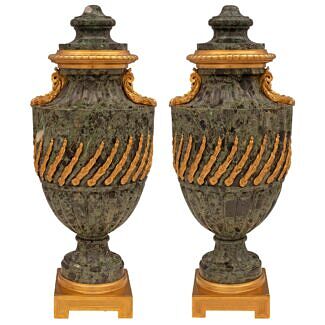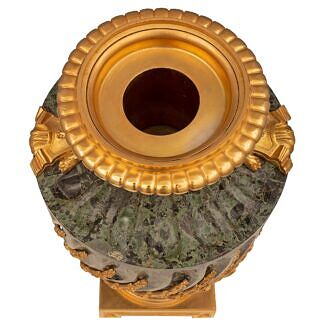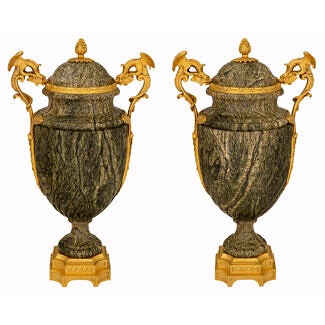A true pair of French 19th century Belle Époque period Brèche Verte d’Egypte marble and ormolu urns, signed ‘SORMANI PARIS’
A stunning and extremely high quality true pair of French 19th century Louis XVI st. Belle Époque period Brèche Verte d'Egypte marble and ormolu lidded urns, signed 'SORMANI PARIS'. Each urn is raised by an elegant ormolu base with a... — Read More
A stunning and extremely high quality true pair of French 19th century Louis XVI st. Belle Époque period Brèche Verte d'Egypte marble and ormolu lidded urns, signed 'SORMANI PARIS'. Each urn is raised by an elegant ormolu base with a most decorative stepped design. The bases display concave reeded corners and arched shapes at the sides, front and back where the signature is displayed with a fine Entrelacs et les Rosaces pattern. Above the mottled socle shaped pedestals are the elegantly shaped bodies which display richly sculpted twisted fluted designs that are mirrored on the opposite urn. Impressive handles lead up each side with charming finely detailed flowers leading up to impressive and richly chased dragons with mythological dolphin heads in a rich satin and burnished finish. At the rims are beaded ormolu bands centering the removable lids with fine acorn finials and which can be removed to reveal the finished interiors. All original gilt throughout. — Read Less
- Item # 7634
-
H: 17.5 in L: 9.5 in D: 6.5 in
H: 44 cm L: 24 cm D: 17 cm
- France
- 19th Century
- Marble/Stone, Ormolu
-
Belle Époque Period Read More,
Louis XVI st. Read More
(Belle Époque Period) -
Gaining its name from the optimistic and peaceful period of time between 1871 and World War I, Belle Epoque means “beautiful period”, and occurred during the era of the Third French Republic. This period of economic, colonial, and scientific prosperity brought with it a flourishing artistic climate with numerous literal, musical, theatrical, and visual masterpieces being created.
The Eiffel Tower, which was constructed between 1887 and 1889, served as the entrance to the World’s Fair held in Paris. That same year, the Moulin Rouge cabaret in Paris was founded and showcased the now more mainstream styles of performance including can-can dancing. Belle Epoque dancers and singers were Paris celebrities and became immortalized by the poster arts of Toulouse-Lautrec.
Leading up to this period in 1865, the American Civil War was coming to a close, with France proposing to construct the Statue of Liberty as a joint effort with the United States. France would be responsible for the statue, with America constructing the pedestal. Created to celebrate the nation’s success in building a viable democracy, the statue would stand as a symbol of friendship between the French and American people.
(Louis XVI st.) -
Also known as Louis Seize, Louis XVI's style is a style of architecture, furniture, decoration, and art created during Louis XVI’s 19-year reign in France, just before the French Revolution.
Thought to be a reaction and juxtaposition to the prior more elaborate styles, Louis XVI style developed at the end of the Baroque Period and continued until the birth of French Neoclassicism.
King Louis XVI showed little enthusiasm for the old world styles of the Baroque Period and he sought out a create a new “beau ideal” that focused on the purity and grandeur of Ancient Romans and Greeks.
Inspired by Ancient Roman architecture and art, distinct features of the Louis XVI style are linear lines, small repeated motifs, floral medallions hanging from ribbons, acanthus leaves, urns, dolphins, ram, and lion heads, and griffins.
Greco-Roman elements, often used in earlier and later French styles, were also quick common and included fluted and twisted columns, Caryathids, and corbels.
- Paul Sormani Read More
Paul Sormani (1817-1877) One of the most renowned 19th century French cabinet maker and Bronzier of the highest quality. Paul Sormani established his firm in 1847 at 7 Cimetiere Saint-Nicolas in Paris. Sormani participated in major international exhibitions of 1855, 1862 and 1867. Awarded a bronze medal in 1849 and a first-class medal in 1855. At the Universal Exhibition of 1867, his work has been described as “A quality of workmanship of the highest order".
Payment Plan Option Learn More Choose the payment plan option at checkout and customize this payment option with our team. Payment plans are flexible and items will ship once all payments are received.


